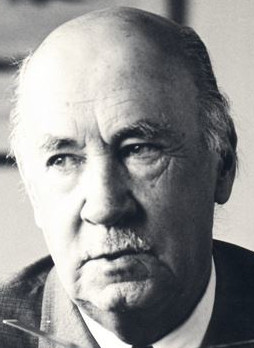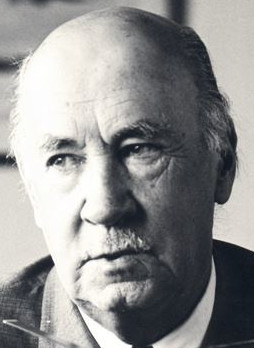


Igor Ivanovich Sikorsky (1889–1972) was a pioneering aeronautical engineer, aviator, and inventor, best known for designing and building the world's first successful helicopters and early multi-engine airplanes. Born in the Russian Empire, Sikorsky later moved to the United States, where he founded the Sikorsky Aircraft Corporation and developed the first practical helicopter, the VS-300, which laid the foundation for modern helicopter aviation. His contributions to both fixed-wing aviation and rotary-wing flight have made him one of the most significant figures in the history of aerospace engineering.
Birth and Family Background: Igor Sikorsky was born on May 25, 1889, in Kyiv, which was then part of the Russian Empire. He was the youngest of five children. His father, Ivan Sikorsky, was a well-known psychiatrist and professor, and his mother, Maria Sikorsky, was a physician who, despite not practicing medicine, encouraged her son to be curious about science and technology. Sikorsky grew up in an intellectually stimulating environment, with access to books about engineering, aviation, and inventions.
Interest in Aviation: From an early age, Sikorsky was fascinated by the concept of flight. His interest was piqued when, at the age of 12, he learned about the accomplishments of aviation pioneers such as Leonardo da Vinci, Jules Verne, and later, the Wright brothers. He was particularly inspired by Verne's book, "Robur the Conqueror," which imagined a future with heavier-than-air flying machines. This inspiration led him to experiment with model aircraft and dream of developing real flying machines.
Education and Early Experiments: Sikorsky enrolled at the Naval Academy in Saint Petersburg, but he left in 1909 to pursue his passion for engineering and aviation. He traveled to Paris, then the hub of early aviation, where he interacted with leading aeronautical engineers. He returned to Kyiv and enrolled at the Kyiv Polytechnic Institute, where he began his experiments with heavier-than-air flight.
First Helicopter Attempts (1909–1910): In 1909, Sikorsky attempted to build a helicopter capable of vertical flight. However, the available engines were not powerful enough to achieve lift, and these early experiments failed. Although his initial helicopter project was unsuccessful, it provided valuable insights that Sikorsky would later use when developing successful helicopters in the United States.
Fixed-Wing Aircraft Successes: Shifting his focus to fixed-wing aircraft, Sikorsky began designing and building airplanes. His first successful aircraft, the Sikorsky S-2, made its maiden flight in 1910. He continued to improve his designs, and by 1913, he had developed the Sikorsky S-6, which earned him recognition as one of Russia's leading aviation pioneers. The S-6 won several aviation competitions and earned him a position as the chief engineer for the Russian Baltic Railroad Car Works.
World's First Multi-Engine Airplane (1913): One of Sikorsky's most significant early achievements was the creation of the Sikorsky Russky Vityaz (Russian Knight) in 1913, which was the world's first multi-engine airplane. This groundbreaking aircraft demonstrated the feasibility of using multiple engines for added power and safety, laying the foundation for the development of large, long-distance aircraft. Sikorsky followed this success with the Sikorsky Ilya Muromets, a four-engine biplane designed as a luxury passenger aircraft that later became a bomber during World War I. The Ilya Muromets was notable for its size, comfort, and the ability to carry large payloads, making it a major milestone in the history of aviation.
Russian Revolution and Emigration (1919): Following the Russian Revolution of 1917 and the ensuing Civil War, Sikorsky found it increasingly difficult to work under the chaotic conditions of post-revolutionary Russia. In 1919, he emigrated to France, where he briefly worked in the aviation industry. However, with the economic difficulties facing post-war Europe, Sikorsky decided to move to the United States in 1919, hoping to find better opportunities to pursue his dreams of aviation.
Starting Over in the United States: Sikorsky arrived in New York City with little money and had to work a series of odd jobs, including teaching mathematics to Russian émigrés. In 1923, with the help of a small group of fellow Russian immigrants, Sikorsky formed the Sikorsky Aero Engineering Corporation on Long Island. The company's early projects included designing and building small aircraft. One of his first successes in the United States was the Sikorsky S-29-A, a twin-engine biplane designed for passenger and cargo transport.
Sikorsky Aircraft Corporation: In 1929, Sikorsky's company became part of the newly formed United Aircraft and Transport Corporation (later United Technologies Corporation), which provided the resources and support necessary to pursue his aviation ambitions. Sikorsky Aircraft Corporation moved to Stratford, Connecticut, and Sikorsky began working on large flying boats, which were highly successful and helped establish him as a major figure in the American aviation industry.
Flying Boats: During the 1930s, Sikorsky focused on the development of flying boats, which were large, long-range seaplanes capable of landing on water. His most famous flying boat, the Sikorsky S-42, was developed for Pan American Airways and played a crucial role in establishing transatlantic and transpacific air travel. Known as the "Clipper", the S-42 could carry passengers on long-distance flights, and it helped pave the way for commercial air travel across the oceans. The success of Sikorsky's flying boats earned him international recognition and financial stability.
Return to Helicopter Development: Despite his success with fixed-wing aircraft, Sikorsky never abandoned his early dream of building a practical helicopter. He resumed work on vertical flight in the late 1930s, convinced that recent advances in engine technology could make helicopters a reality. In 1939, Sikorsky successfully flew his first helicopter, the VS-300, which he had designed and built in the United States. The VS-300 was the first practical helicopter to use a single main rotor with a tail rotor for stability—an innovative design that became the standard for nearly all future helicopters.
First Mass-Produced Helicopter: The success of the VS-300 led to the development of the Sikorsky R-4, which became the world's first mass-produced helicopter in 1942. The R-4 was adopted by the U.S. Army Air Forces and other military branches, where it was used for reconnaissance, medical evacuation, and search and rescue missions during World War II. The R-4's success demonstrated the helicopter's versatility and usefulness, and it marked the beginning of the helicopter's role as an essential tool in both military and civilian aviation.
Advancements in Helicopter Design: Sikorsky continued to innovate in helicopter design throughout the 1940s and 1950s, developing helicopters for both military and commercial use. His designs, such as the Sikorsky H-19, H-34, and S-55, became some of the most widely used helicopters in the world. Sikorsky helicopters played key roles in military conflicts, including the Korean War and Vietnam War, and were used for a wide range of civilian applications, including medical transport, search and rescue, and commercial aviation.
Contributions to Vertical Flight: Sikorsky's pioneering work in helicopter design helped establish the rotary-wing aircraft industry and revolutionized aviation. His helicopters provided unique capabilities that fixed-wing aircraft could not match, such as vertical takeoff and landing, hovering, and maneuverability in confined spaces. These features made helicopters indispensable for a variety of missions, from medical evacuation and disaster relief to construction and oil exploration.
Personal Philosophy and Vision: Sikorsky was deeply influenced by his Christian faith and believed that his work was part of a larger mission to improve human life. He often spoke of the humanitarian applications of aviation, particularly the role helicopters could play in saving lives and providing emergency assistance. His passion for flight was not only technical but also idealistic, and he saw aviation as a means to bring people closer together and to help those in need.
Death (1972): Igor Sikorsky retired from active involvement in his company in the 1950s, but he remained a consultant and continued to follow developments in the aerospace industry. He died on October 26, 1972, in Easton, Connecticut, at the age of 83. Sikorsky's legacy as a pioneer of aviation was celebrated around the world, and his contributions to both fixed-wing and rotary-wing aviation have left a lasting impact on the field.
Pioneer of Aviation: Igor Sikorsky is remembered as one of the great pioneers of aviation, whose work laid the foundation for both fixed-wing aircraft and helicopters. His development of the multi-engine airplane and his creation of the first practical helicopter made him one of the most influential figures in the history of flight. Sikorsky's work paved the way for modern aviation and changed the way people travel, communicate, and respond to emergencies.
Father of the Helicopter: Sikorsky is often called the "father of the helicopter" for his pioneering work in making rotary-wing aircraft practical and reliable. His design for the VS-300, with a single main rotor and a tail rotor for stability, became the standard configuration for helicopters and remains the dominant design to this day. His helicopters have saved countless lives in military, medical, and rescue operations, and they continue to serve a wide range of roles in both the military and civilian sectors.
Humanitarian Vision: Sikorsky's vision for the helicopter extended beyond its technical capabilities. He saw the helicopter as a tool for humanitarian purposes and often emphasized its potential to save lives. His belief in the moral value of his work helped inspire others in the aviation industry to pursue innovations that could benefit humanity. Sikorsky's contributions to search and rescue operations and his role in creating aircraft that could access remote or dangerous areas have had a profound impact on the way people respond to emergencies and disasters.
Honors and Memorials: Sikorsky received numerous awards and honors for his contributions to aviation, including the National Medal of Science and the Wright Brothers Memorial Trophy. He was inducted into the International Aerospace Hall of Fame and the National Inventors Hall of Fame. The Sikorsky Aircraft Corporation, which he founded, remains a leading manufacturer of helicopters and is now part of Lockheed Martin. Sikorsky's legacy is also honored through scholarships and educational programs that encourage the study of aerospace engineering and innovation.
Igor Sikorsky was a visionary engineer, inventor, and pioneer who made significant contributions to both fixed-wing aviation and rotary-wing flight. His development of the world's first multi-engine airplanes and the first practical helicopters revolutionized aviation and laid the foundation for modern aerospace technology. His work not only changed the course of aviation history but also demonstrated the power of perseverance, imagination, and the pursuit of dreams.
Sikorsky’s helicopters have become synonymous with rescue, humanitarian aid, and military operations, embodying his belief that aviation could be a force for good. His legacy lives on in the aircraft that continue to serve humanity and in the inspiration he provided to future generations of engineers, inventors, and aviators. Igor Sikorsky’s impact on aviation is immeasurable, and his contributions have forever changed the way people travel, explore, and help one another from above.

We use cookies
We use cookies and other tracking technologies to improve your browsing experience on our website, to show you personalized content and targeted ads, to analyze our website traffic, and to understand where our visitors are coming from. Privacy Policy.